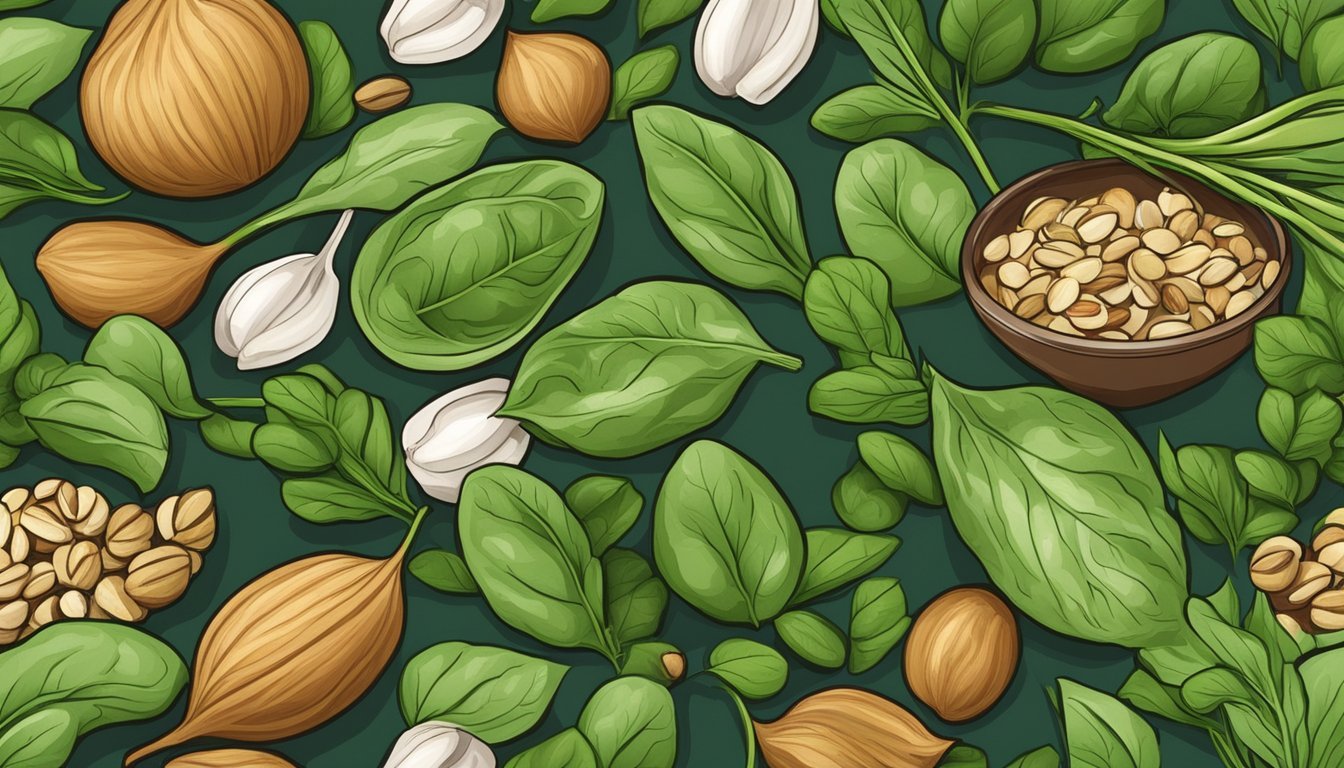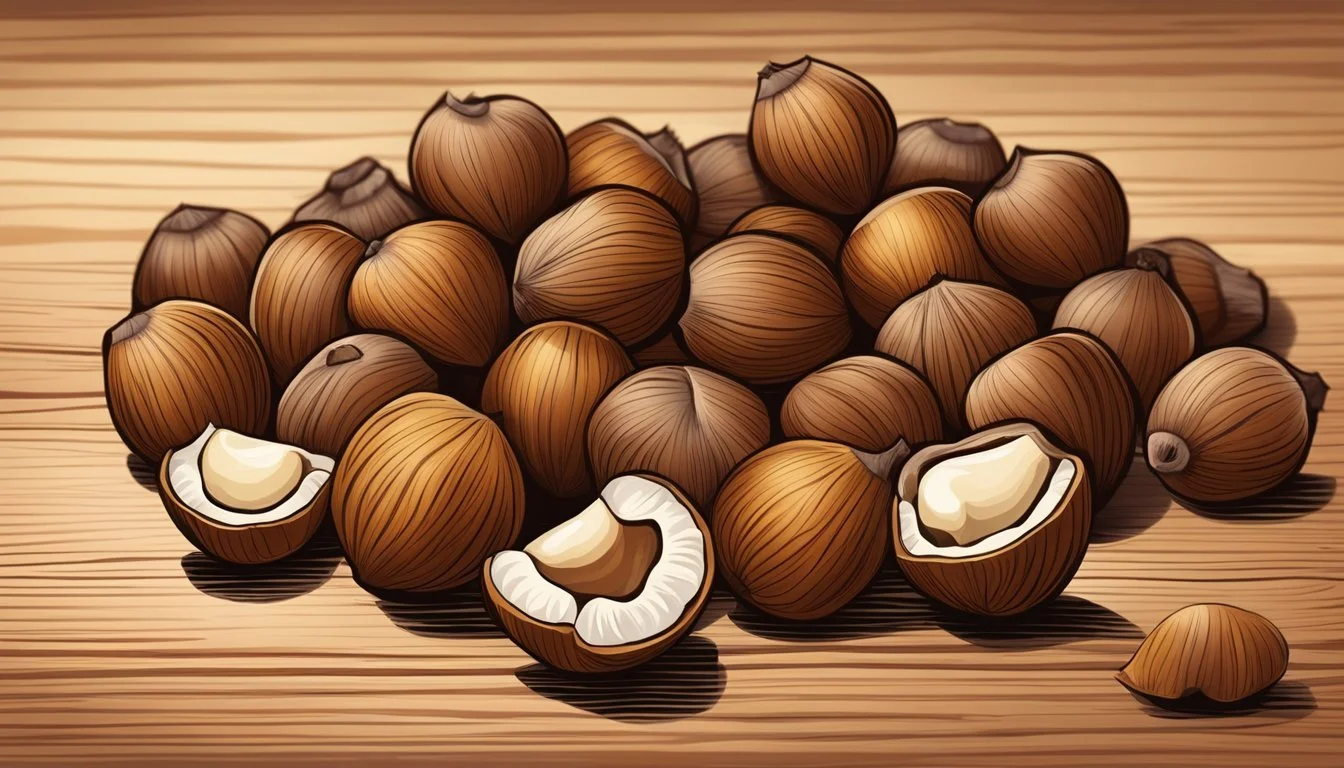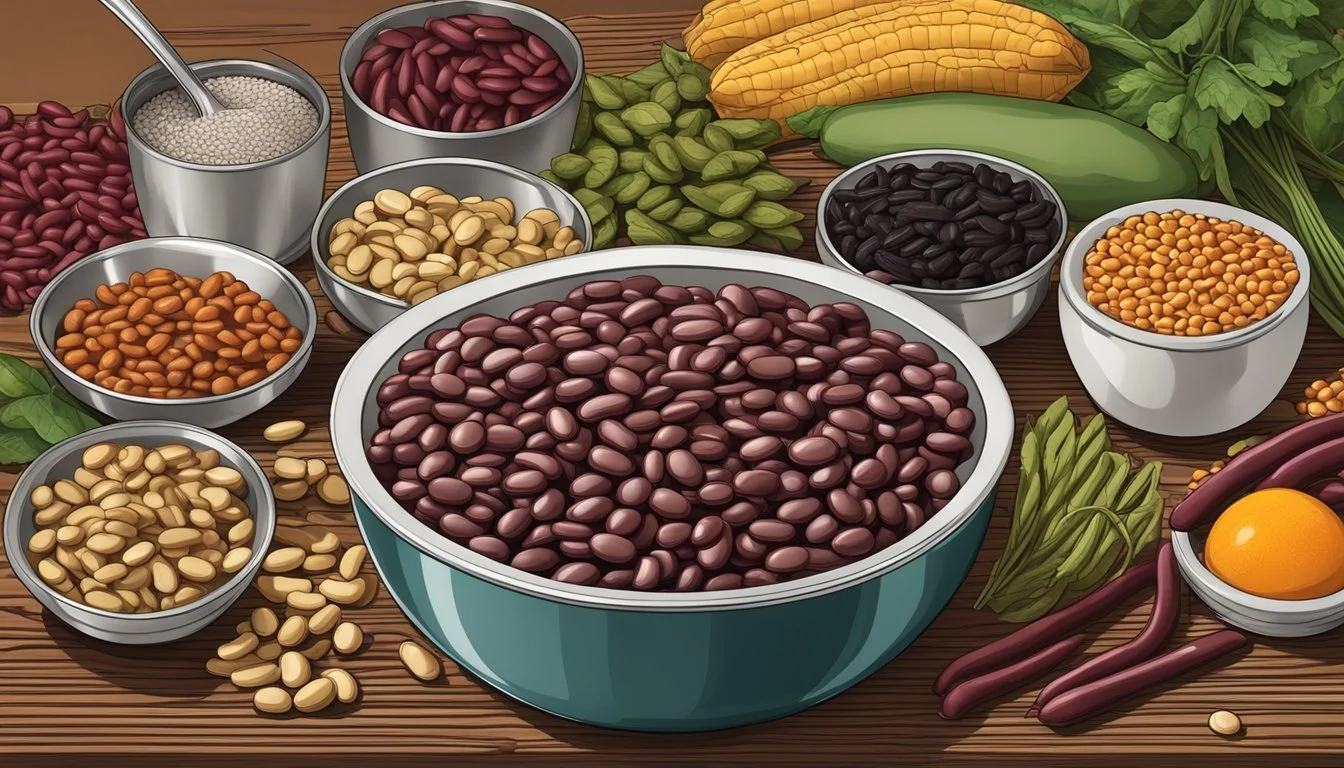7 Common Foods High in Nickel
Essential Insights and Sources
Nickel is a trace element found in varying amounts across a wide range of foods, and while it is essential for maintaining proper bodily functions, excessive intake can lead to adverse reactions for those with sensitivities. A diet high in nickel can pose challenges for individuals who suffer from nickel allergies and need to manage their intake to prevent allergic reactions.
Understanding which foods are high in nickel is crucial for anyone working to reduce their exposure. This article aims to provide comprehensive insights into these foods, allowing individuals to make informed dietary choices to maintain their health and well-being.
1) Lentils
Lentils are a nutritious legume that many people include in their diets for their health benefits. They are known to contain high amounts of nickel, which can be a concern for individuals with nickel allergies or sensitivities.
Nickel can be found in a variety of foods, and lentils are among those with significant levels. It is important for those affected to be aware of this and potentially limit their intake.
Lentils are versatile and can be used in soups, stews, and salads. Despite their nutritional value, people with nickel sensitivity might experience reactions such as skin rashes or digestive discomfort after consuming them.
To avoid such reactions, individuals can either reduce the frequency of eating lentils or choose alternative legumes that are lower in nickel. These measures can help manage and minimize symptoms related to nickel intake.
2) Oats
Oats are a common breakfast staple, often found in oatmeal, granola, and various baked goods. This grain is sought after for its nutritional benefits, but it's also notable for its nickel content.
Canadian oats, for example, can contain up to 3 parts per million (ppm) of nickel. This level is relatively low, yet individuals with severe nickel allergies might still experience reactions.
Prepared oats, such as those used in skin creams or bath soaks, should generally have lower nickel exposure, as they are not applied directly to the skin in a concentrated form. Nonetheless, dietary intake remains a key consideration.
For those looking to avoid high-nickel foods, oat products such as oat bran, oatmeal, and granola bars should be consumed with caution. Substituting with low-nickel grains like rice or corn might be advisable for sensitive individuals.
3) Hazelnuts
Hazelnuts are a notable source of nickel. This metal is found naturally in the soil, and hazelnut trees absorb it as they grow. Consequently, the nuts themselves contain significant amounts of nickel.
Persons with nickel allergies or sensitivities may experience symptoms after consuming hazelnuts. These symptoms can include itching, rashes, or digestive issues. It is essential for those affected to be cautious with their diet.
Hazelnut products, such as hazelnut spreads or hazelnut-containing chocolates, also share this nickel content. This extends the need for vigilance to processed foods, not just raw nuts.
Understanding the potential nickel content in hazelnuts can help with dietary planning. People can seek alternative nuts or seeds if nickel sensitivity is a concern.
4) Buckwheat
Buckwheat is a common grain known for its high nickel content. It is often recommended to avoid or limit this grain for individuals sensitive to nickel. This grain can be found in various forms, such as flour, groats, and as an ingredient in many foods like pancakes and noodles.
Foods made with buckwheat, including certain cereals and baked goods, may contain significant levels of nickel. Therefore, those managing a low-nickel diet should be cautious of these products.
Buckwheat can also be a component in multi-grain breads, which often combine various grains with differing nickel levels. It's essential to read labels and ingredient lists if avoiding nickel is a priority.
5) Soybeans
Soybeans are a significant source of nickel, making them an important food to be aware of for those monitoring their nickel intake.
Rich in protein and used in various forms, such as tofu, soy milk, and soy sauce, soybeans are popular in many diets.
Despite their nutritional benefits, the high nickel content can be problematic for individuals with nickel allergies.
Soybeans contain nickel naturally, and their various products often retain this element.
From whole beans to processed soy products, they consistently exhibit high levels of nickel.
Understanding this characteristic helps individuals make informed dietary choices to manage their nickel exposure effectively.
These seeds are prevalent in vegetarian and vegan diets, increasing the need for awareness among those with nickel sensitivity.
Balancing nutritional intake with potential allergens like nickel is crucial for maintaining health and well-being.
By recognizing soybeans as a high-nickel food, individuals can better navigate their dietary options.
6) Kidney Beans
Kidney beans are known for their high nutritional content, including protein, fiber, and essential vitamins. They are a staple in many diets around the world, particularly in vegetarian and vegan cuisine.
High in nickel, kidney beans can contribute significantly to the daily intake of this metal. Studies indicate that dry dark red kidney beans can contain up to 79 µg of nickel per serving. This makes them a concern for individuals with nickel allergies.
Regular consumption of kidney beans can lead to an increased level of nickel in the body. This is particularly significant for those who need to manage their nickel intake due to allergies or other health conditions.
Kidney beans are versatile and can be used in various dishes, such as soups, stews, and salads. Despite their health benefits, individuals with nickel sensitivity should consume them in moderation.
7) Cashews
Cashews are a popular snack and ingredient found in many dishes. They are known for their rich, creamy texture and high nutritional value.
Though cashews have numerous health benefits, they are also high in nickel. This makes them a food to avoid for individuals sensitive to nickel or those with a nickel allergy.
A single serving of cashews can contain over 100 μg of nickel. This level can contribute significantly to the daily nickel intake, potentially triggering allergic reactions in susceptible individuals.
It's important for those managing a low-nickel diet to monitor their intake of cashews. Even small portions can add up quickly and exceed recommended amounts.
Cashews can be found in various forms, including raw, roasted, and as an ingredient in mixed nuts or recipes. Awareness of their nickel content is essential for those needing to limit their nickel ingestion.
8) Chickpeas
Chickpeas are a significant source of nickel. Often used in various cuisines, they offer nutritional benefits but pose a challenge for those needing to avoid nickel.
These legumes are a versatile ingredient in many dishes, from salads to stews. Their high nickel content, however, makes them unsuitable for nickel-sensitive individuals.
Chickpeas are not only found in whole form but also in products such as hummus and falafel. It is essential to read labels and be cautious of these nickel-containing items.
Incorporating chickpeas into meals is common for their protein and fiber, yet those on a low-nickel diet should seek alternatives.
9) Sunflower Seeds
Sunflower seeds are known for their high nickel content. They are frequently cited in resources focused on nickel-rich foods. A serving of sunflower seeds can contain over 100 micrograms of nickel.
Apart from their nickel content, sunflower seeds are often enjoyed for their nutritional benefits. They are a good source of vitamin E and healthy fats.
However, for individuals sensitive to nickel, it's important to limit or avoid sunflower seeds. These seeds can significantly contribute to the daily intake of nickel, leading to potential adverse reactions.
In various diets, such as a low-nickel diet, sunflower seeds are typically listed among foods to avoid. This precaution helps in managing nickel allergy symptoms effectively.
10) Spinach
Spinach is a leafy green vegetable known for its high nutritional value. It also contains a significant amount of nickel. This makes it an important food to monitor for those managing a nickel allergy or sensitivity.
Spinach can contribute to nickel intake considerably, with levels as high as 0.39 micrograms per gram.
Those with a nickel sensitivity should limit or avoid spinach in their diet to prevent allergic reactions.
Cooking methods can influence nickel content in spinach, but even cooked spinach retains a substantial amount of this metal. Additionally, spinach is often included in various dishes, such as salads, smoothies, and cooked entrees.
Being mindful of its presence in different meals is crucial for effective dietary management.
Understanding Nickel Sensitivity
Nickel sensitivity affects many people, leading to allergic reactions when they come into contact with nickel in foods or everyday items. This section covers the symptoms of nickel allergy and methods for diagnosing nickel sensitivity.
Nickel Allergy Symptoms
Nickel allergy can manifest through various symptoms, often appearing on the skin. Common symptoms include redness, itching, and rash. In severe cases, blisters or dry patches may develop.
Affected areas are generally where the skin has been in contact with nickel-containing items like jewelry or zippers. Symptoms might also appear after consuming foods high in nickel, such as chocolate and nuts.
For some individuals, symptoms can include systemic reactions such as headaches or fatigue. Recognizing these symptoms early is crucial for managing and mitigating allergic reactions effectively.
Diagnosing Nickel Sensitivity
Diagnosis of nickel sensitivity typically begins with a patient's medical history and physical examination. Dermatologists often use a patch test to confirm the allergy. During this test, small amounts of nickel are placed on the skin under adhesive patches, which are then monitored for reactions.
The patch test usually takes several days to complete, with results showing as localized irritation or a rash at the application site. Once diagnosed, patients can begin to manage their condition by avoiding nickel-containing items and foods.
Medical professionals may also recommend additional blood tests or skin biopsies in specific cases to rule out other conditions. Understanding the diagnostic process allows individuals to seek prompt treatment and avoid further exposure.
Nutritional Considerations
When managing a diet high in nickel, it is crucial to balance nutrient intake and adhere to practical tips for maintaining a nickel-free diet. Doing so helps reduce nickel exposure while ensuring adequate nutrition.
Balancing Nutrients
Individuals avoiding nickel often eliminate or reduce various foods, which can impact nutrient intake. Foods such as green leafy vegetables, certain grains, legumes, and seeds are high in nickel but also essential sources of vitamins and minerals.
Key Foods to Limit:
Leafy greens (e.g., spinach, kale)
Whole grains (e.g., wheat, buckwheat)
Legumes (e.g., lentils, chickpeas)
Seeds (e.g., sunflower, sesame)
To maintain a balanced diet, individuals should seek alternatives. For instance, incorporating lower-nickel vegetables like cucumbers, carrots, and potatoes. Ensuring variety can help meet nutritional needs without excessive nickel intake.
Nickel-Free Diet Tips
Adopting a nickel-free diet involves specific strategies to avoid high-nickel content while keeping meals nutritious. Reading labels, choosing fresh or frozen produce over canned, and selecting nickel-safe alternatives to high-nickel foods are crucial steps.
Tips:
Choose Fresh/Frozen Over Canned: Fresh and frozen fruits and vegetables tend to have lower nickel levels compared to canned options.
Read Labels: Ingredients in processed and packaged foods often contain hidden sources of nickel.
Alternative Ingredients: Use nickel-free options like white rice instead of brown rice, and chicken or turkey instead of legumes like soy.
Careful planning and awareness can make a nickel-free diet manageable and nutritionally sound.










